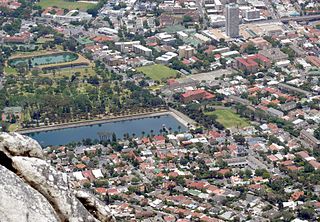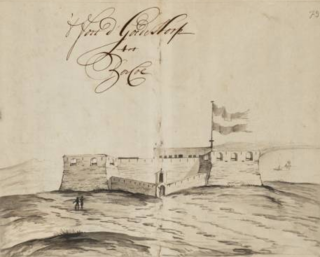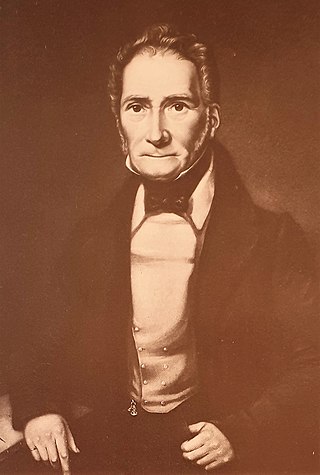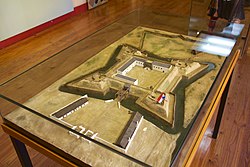
Leerdam is a city and former municipality in the western Netherlands, in the province of Utrecht. The municipality was merged with the municipalities of Vianen and Zederik on 1 January 2019. The name of the new municipality is Vijfheerenlanden which is a part of the province Utrecht. The former municipality Leerdam was a part of the province South Holland.

Johan Anthoniszoon "Jan" van Riebeeck was a Dutch navigator, ambassador and colonial administrator of the Dutch East India Company.

The Castle of Good Hope Decoration was a military decoration for bravery which was instituted by the Union of South Africa on 6 April 1952, but never awarded. The decoration was intended for award to members of the South African Defence Force for a signal act of valour or most conspicuous bravery or some daring or pre-eminent act of self-sacrifice or extreme devotion to duty in the presence of the enemy.

Oranjezicht is a suburb in the City Bowl area of Cape Town, South Africa. It was built on the site of the old Oranjezicht farm, which used to stretch at least as far as the Mount Nelson Hotel and supplied the Castle of Good Hope with fresh produce.

The Castle of Good Hope is a 17th century bastion fort in Cape Town, South Africa. Originally located on the coastline of Table Bay, following land reclamation the fort is now located inland. In 1936 the Castle was declared a historical monument and following restorations in the 1980s it is considered the best preserved example of a Dutch East India Company fort.

The "!Oroǀõas" ("Ward-girl"), spelled in Dutch as Krotoa or Kroket, otherwise known by her Christian name Eva, was a !Uriǁ'aeǀona translator who worked for the Vereenigde Oostindische Compagnie (VOC) during the founding of the Cape Colony.

The Khoikhoi–Dutch Wars refers to a series of armed conflicts that took place in the latter half of the 17th century in what was then known as the Cape of Good Hope, in the area of present-day Cape Town, South Africa, fought primarily between Dutch colonisers, who came mostly from the Dutch Republic and the local African people, the indigenous Khoikhoi.

The Redoubt Duijnhoop was a square demi-bastioned clay and timber Redoubt built fort constructed at the mouth of the Salt River, leading into Table Bay, South Africa in January–February 1654. It formed part of the defences of the Vereenigde Oost-Indische Compagnie 'VOC' replenishment station, which had been established under Jan van Riebeeck in 1652. The purpose of the station was to supply ships travelling between the Netherlands and the Dutch East Indies.

Fort Patience is a Dutch-built fort located in the township of Apam, in the Central Region of Ghana. Originally built in 1697, it served as a defensive fortification and a trading post. Because of its testimony to European pre-colonial and colonial influence in West Africa, the fort was inscribed on the UNESCO World Heritage List along with several other forts and castles in Ghana.
Dozens of fortifications were built in Cape Town and the Cape Peninsula between the 1650s and the 1940s. Most have gone, but a few still stand.

The Chavonnes Battery was a fortification protecting Cape Town, South Africa, built in the early 18th century. It is now a museum and function venue.

Fort de Goede Hoop or Fort Good Hope was a fort on the Dutch Gold Coast, established in 1667 near Senya Beraku.
The following is a timeline of the history of Cape Town in the Western Cape province of South Africa.

The Houses of Parliament is the meeting place of the Parliament of South Africa, the legislative body of the Government of South Africa. The building is located in South Africa's legislative capital, Cape Town.

The South African International Exhibition was a world's fair held in Cape Town, Cape Colony in 1877. It was officially opened on 15 February of that year by Henry Bartle Frere.
Freemasonry was brought to South Africa by members of the Grand Orient of the Netherlands in 1772. Today there are lodges chartered under the United Grand Lodge of England, the Grand Lodge of Scotland, the Grand Lodge of Ireland, the Grand Lodge of South Africa, as well as Le Droit Humain
Johann Coenraad Gie was a businessman, community leader, and Grand Master of the Freemasons in Cape Colony.

Michiel van Breda was a Cape Colony farmer, founder of Bredasdorp, Mayor of Cape Town and a Freemason.

The following outline is provided as an overview of and topical guide to Cape Town:

IJsbrand Godske was the second Governor of the Dutch Cape Colony. After the death of Governor Pieter Hackius's on 30 November 1671, Godske was appointed to succeed him with the title of Governor and Councillor Extraordinary of India. For the time it took him to arrive at the Cape, first the Political Council and from 23 March 1672 to 2 October 1672, the secunde, Albert van Breugel, acted as governor.


















